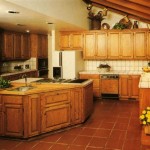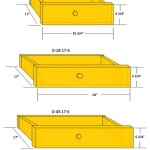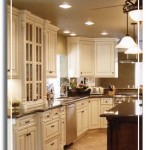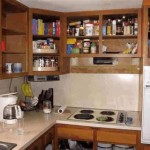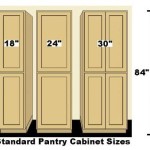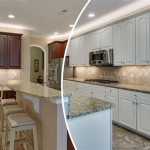How to Repair Laminate Cabinets
Laminate cabinets, while durable and affordable, are not immune to damage. Over time, they can become scratched, chipped, or even dented. Fortunately, repairing laminate cabinets is a relatively straightforward process. With a few simple tools and materials, you can restore them to their former glory.
Assess the Damage
Before embarking on any repair, it's crucial to assess the extent of the damage. This will inform the appropriate repair techniques and materials. For instance, minor scratches and chips can be addressed with a simple touch-up, while deeper gouges or dents may require more substantial repairs.
Look for the following:
- Scratches: These are common and usually superficial. They can range from light scratches that barely mar the surface to deeper ones that affect the laminate layer.
- Chips: These are small, missing pieces of laminate, often caused by impact. Chips can be small and shallow or large and deep.
- Dents: These are depressions in the laminate surface, usually caused by forceful impact. Dents can be minor and shallow or significant and deep.
- Water Damage: If the laminate has been exposed to water for extended periods, it may warp or delaminate, causing the laminate to separate from the underlying substrate.
Tools and Materials
The tools and materials required for repairing laminate cabinets will vary depending on the extent of the damage. However, a basic toolkit will include:
- Sandpaper: Different grits, such as 120, 220, and 400, will be necessary for sanding the laminate surface.
- Putty knife: For applying fillers and scraping off excess material.
- Wood filler: Choose a filler that closely matches the color of your cabinets.
- Epoxy resin: For filling deep gouges or dents.
- Touch-up paint: A paint pen or small brush with a color matching the laminate.
- Masking tape: To protect surrounding areas from paint or filler.
- Clean cloth: For wiping away dust and excess material.
- Protective gloves: To protect your hands from dust and chemicals.
Repairing Scratches and Chips
Scratches and minor chips can be repaired with a combination of sanding and touch-up paint:
- Clean the surface: Wipe the affected area with a damp cloth to remove any dirt or debris.
- Sand the area: Use fine-grit sandpaper (220 or 400) to smooth out the scratch or chip. Sand in the direction of the laminate grain to avoid creating more damage.
- Apply touch-up paint: Use the touch-up paint pen or a small brush to fill the scratch or chip. Allow the paint to dry completely before moving on to the next step.
- Blend the paint: If necessary, use a soft cloth to gently blend the touch-up paint with the surrounding laminate.
Repairing Dents
Dents require a slightly more complex approach:
- Clean the surface: Wipe the affected area with a damp cloth, removing any dirt or debris.
- Fill the dent: Apply wood filler to the dent using a putty knife. Press the filler firmly into the indentation, ensuring it's level with the surrounding surface.
- Smooth the filler: Allow the filler to dry completely according to the manufacturer's instructions. Once dry, sand the surface with fine-grit sandpaper (220 or 400) to achieve a smooth finish.
- Apply touch-up paint: Use the touch-up paint pen or a small brush to color the repaired area. Allow the paint to dry completely.
- Blend the paint: If necessary, blend the touch-up paint with the surrounding laminate using a soft cloth.
Repairing Deep Gouges
Deep gouges require a more substantial repair using epoxy resin:
- Clean the surface: Wipe the affected area with a damp cloth to remove any dirt or debris.
- Mix the epoxy resin: Follow the manufacturer's instructions for mixing the epoxy resin. Typically, this involves combining equal parts resin and hardener.
- Fill the gouge: Apply the epoxy resin to the gouge using a putty knife. Press it firmly into the indentation, ensuring it's level with the surrounding surface.
- Smooth the epoxy: Allow the epoxy to cure completely according to the manufacturer's instructions. Once cured, use sandpaper to smooth out the surface, blending it with the surrounding laminate.
- Apply touch-up paint: Use the touch-up paint pen or a small brush to color the repaired area. Allow the paint to dry completely.
- Blend the paint: If necessary, blend the touch-up paint with the surrounding laminate using a soft cloth.
By following these steps, you can effectively repair minor imperfections on your laminate cabinets. Remember to choose the right materials and techniques for the specific type of damage, and always wear protective gear when handling tools and chemicals.

How Do I Fix Laminate Cabinets Hometalk

Doors How To Repair Or Hide Chipped Kitchen Cabinets Home Improvement Stack Exchange

How Do I Repair Laminate Damage On A Kitchen Cabinet Home Improvement Stack Exchange

How To Fix Ling Laminate Edging

My Laminate Drawers And Doors Are Ling Ing Help Hometalk

Painting Laminate Kitchen Cabinets Cuckoo4design

How Do You Paint Laminate Kitchen Cupboards When They Re Ling Hometalk

How Do I Fix Laminate Cabinets Hometalk

Painting Laminate Kitchen Cabinets Cuckoo4design

How To Repair Ling Veneer On Particle Board Cabinets Handhills
Related Posts

